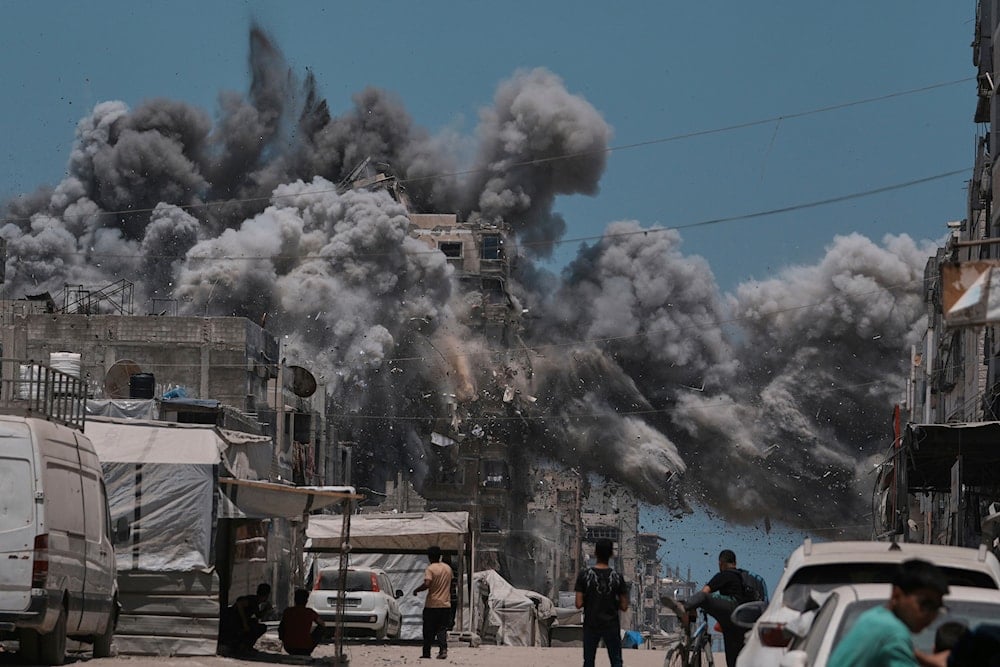Israeli Gaza evacuation orders reveal plans of mass expulsion: FT
A Financial Times analysis reveals the reality of "Israel's" plans for Gaza: Confining the Palestinians to the southern parts of the Strip and eventually expelling them from their lands.
-

Smoke rises to the sky following an Israeli strike in Gaza City, Sunday, June 1, 2025. (AP)
The hundreds of Israeli evacuation orders in Gaza, including about 30 since the March ceasefire collapse, demonstrate how the Israeli war on Gaza has steadily shrunk Palestinian access to land as it seeks control of the enclave, a Financial Times analysis published on Monday revealed.
According to the Financial Times, over 80% of Gaza, already one of the world's most densely populated territories even before October 7, 2023, is now subject to Israeli military zones and evacuation orders.
To make matters worse, Israeli Prime Minister Benjamin Netanyahu has indicated plans to further concentrate Gaza's entire population into a small southern area near the Egyptian border while declaring the remainder of the territory inaccessible.
International observers have warned that "Israel's" forced displacement of Gazans toward an arid, resource-starved zone without basic infrastructure such as water, electricity, or medical facilities may constitute ethnic cleansing, while Palestinians increasingly view this as preparation for their mass expulsion from the territory entirely.
“Within a few months... Gaza will be destroyed,” Israeli far-right minister Bezalel Smotrich proclaimed at a May conference, emphasizing that the Palestinians in Gaza will be forced to the southern part of the Strip.
Destruction and deprivation
While "Israel" has already reduced much of northern Gaza to rubble, its war has extended for weeks into the southern area near the Morag corridor, a zone named after an Israeli settlement that operated from 1972 until "Israel's" 2005 withdrawal from the territory following years of costly and violent occupation.
The remaining territory lacks the necessities to support human life, with the formerly bustling border city of Rafah now largely reduced to ruins and its surrounding sandy landscape stripped of vegetation, while access to fresh water and electricity has been completely severed.
The Morag corridor currently divides the devastated remains of Rafah from Khan Younis, which "Israel" has likewise emptied of its civilian population through forced evacuations, leaving both urban centers abandoned in the wake of military operations.
The displaced families face a reality of extreme overcrowding, creating one of the world's most densely packed human concentrations without the basic infrastructure found in other heavily populated areas, while a complete absence of sanitation systems and running water compounds the dire humanitarian crisis.
Even under the most optimistic estimates, Gaza's exhausted civilian population now faces survival conditions where each individual has access to less physical space than would fill a tiny room, as the relentless conflict continues to shrink viable living areas amid widespread destruction and displacement.
The horrific overcrowding and squalid conditions now endured by Gaza's civilians directly serve Israeli officials' publicly stated objective, using this engineered humanitarian crisis to fulfill "Israel's" ambition of permanently expelling Palestinians from the territory.

 3 Min Read
3 Min Read








